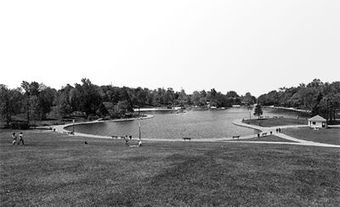Edmund Burke
Edmund Burke, architect (b at Toronto, Ont 31 Oct 1850; d there 2 Jan 1919). Burke contributed to Canadian architecture in three ways. He was instrumental in founding regulatory organizations, which led to legal recognition of professional status for Canada's architects, by codifying standards of practice and education. He proposed the resolution that established the Ontario Association of Architects in 1889, then served as president in 1894 and 1905-07. Later, he was among those who constituted the Royal Architectural Institute of Canada, to which he was elected as one of the regional vice-presidents in 1908.
Burke also introduced to the practice of architecture in Canada new vocabularies and technologies then current in the United States. His Jarvis Street Baptist Church, Toronto (1874-75), was an early exploration of the church amphitheatre based on American models, a plan-type which became common across the country in the closing two decades of the 19th century. Similarly, Burke's Robert Simpson store, Toronto 1894 (destroyed and rebuilt 1895), was a notable early study in curtain-wall construction in Canada. The latter was the benchmark for retail department stores across the country in the decades to follow.
Finally, Burke was active in urban planning initiatives for the city of Toronto in the opening years of the 20th century. He served on a number of committees established by the Ontario Association of Architects and Toronto's Guild of Civic Art, and designed the architectural portion of the Bloor Viaduct (1915-17), in collaboration with the city engineer's office in Toronto. Burke apprenticed with his uncle, Toronto architect Henry Langley, and later became Langley's design partner, before purchasing the practice of the late William George Storm in 1892. After two years as a sole practitioner Burke took John Batstone Horwood, a former student of the Langley office, into partnership. Another Langley student, Murray White, later joined them.
See alsoBURKE, HORWOOD AND WHITE.

 Share on Facebook
Share on Facebook Share on X
Share on X Share by Email
Share by Email Share on Google Classroom
Share on Google Classroom


